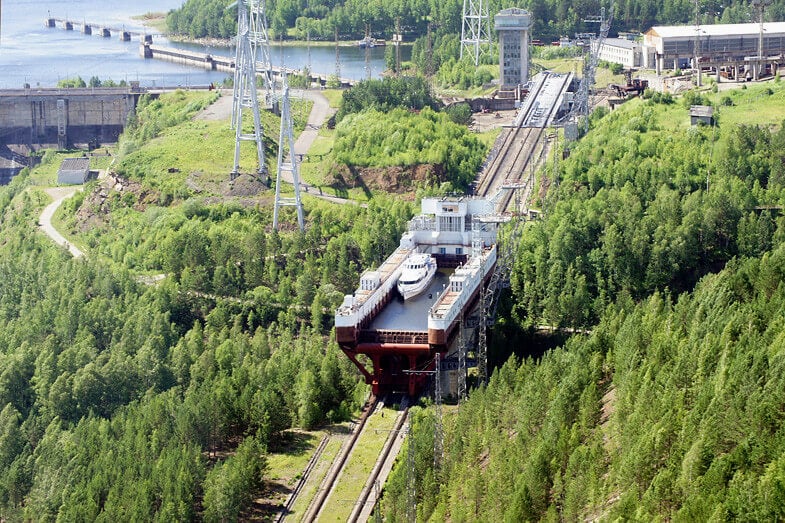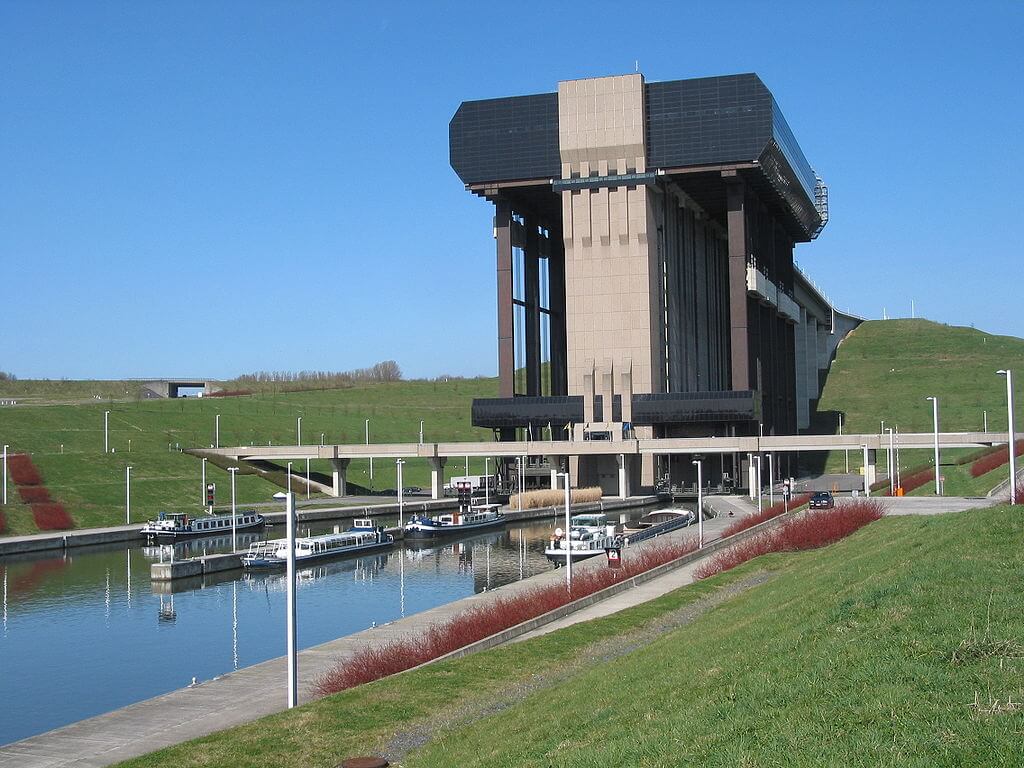- Get link
- X
- Other Apps
- Get link
- X
- Other Apps

The ship lift is a kind of elevator for ships, an alternative to the shipping locks, which we described in the last issue. The first experimental ship lift for raising and lowering boats was designed by James Fussell in 1796 and began to be erected as part of the Dorset and Somerset canal in England. However, this project was never completed. Later, the same scheme was implemented in the Great Western Channel in the UK and put into operation in 1835. Currently, there are about 50 operating ship lifts in the world, one of which is located in our country - in Krasnoyarsk. What are the jack lifts and how they work - about this in today's issue!

The most popular are ship lifts, in which the ship moves afloat - in a special mobile chamber filled with water. The vessel swims into the chamber, and it is locked with watertight gates. After this, depending on the type of ship's elevator, the camera moves along an inclined, vertical or completely with a rotating wheel. In this case, along with the vessel, it is necessary to raise the enormous volume of water in the chamber. However, according to Archimedes' law, the weight of the vessel in the chamber is equal to the weight of the water displaced by it. Consequently, the weight of the camera is always the same. This allows you to accurately select the counterweights, so that the work on moving ships is reduced to work against frictional forces.

Consider the principle of operation of inclined ship lifts using the example of the Krasnoyarsk hydroelectric power station. The Russian lift is a platform, which by means of an electric train moves along a rail track with a gearing and a track width of 9 meters. Traction forces for camera movement are created with the help of 156 reciprocating ship engines with a power of up to 75 kilowatts. Each of the rails of the track rests on a separate overpass. To load the vessel into the elevator, the platform falls below the water level, and the tug boat enters the chamber. When all the prep work is finished, the ship begins to slowly climb the mountain. The speed of the lift is 20 meters per minute. At the top there is a rotary device, which is intended for transferring a ship's chambers from one channel to another or to a repair site. Turning in the right direction, the ship is releasing the ship from the camera, and it continues its journey.

No less interesting is the construction of a vertical ship's elevator. As the name implies, ships in it move vertically up or down like a traditional elevator. In this case, the water chambers hang on the cables and are counterbalanced by a counterweight, or they are set in motion on the principle of a hydraulic press.

But the most unusual are rotating ship lifts, operating on the principle of the Ferris wheel. Vessels in them move in two chambers, suspended from a large wheel, which rotates around its axis. At the moment, the only rotating ship in the world is the Falkirk Wheel in Scotland. The difference in altitude between the two channels it connects is 24 meters. During operation, the wheel raises and lowers two containers filled with water, with a carrying capacity of 300 tons each.
The article is based on materials .
- Get link
- X
- Other Apps
Comments
Post a Comment